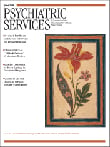The Science, Treatment, and Prevention of Antisocial Behaviors: Volume 2: Evidence-Based Practice
Antisocial behavior is a complex set of behaviors that represent a lack of consideration for others and a disregard for their rights. It is commonly linked to criminal behavior, and its components may include aggressiveness, impulsivity, attentional deficits, labile emotional regulation, and poor judgment. Within the DSM-IV , antisocial behaviors are seen in a variety of disorders, primarily antisocial personality disorder but are also notable in substance use disorders and impulse control disorders.
Diana Fishbein is the director of the Transdisciplinary Behavioral Science Program for RTI International and has a wealth of research and expert experience in the areas of neurobiology of behavioral disorders, criminal justice, and risk factors for antisocial behaviors. The result of much of her work is summarized in this two-volume series on antisocial behaviors. Volume I is entitled Application to the Criminal Justice System and focuses on the origins of criminal behavior.
The second volume, The Science, Treatment, and Prevention of Antisocial Behaviors , is designed to meet the needs of clinicians, researchers, and policy makers who work with persons who display antisocial behaviors. The construct of antisocial behaviors is enormously complex, and one of the goals of this book is to help advance understanding of these behaviors through the use of multiple lenses. The book addresses genetic, neurobiological, and environmental perspectives on the origins of antisocial behaviors. Dr. Fishbein has taken on the task of bringing scientific evidence to explain the origins of antisocial behaviors, because, as she writes, "science must inform ideology as a basis for inquiries within the criminal justice system and for the development of effective treatment, prevention and policy strategies."
The book is divided into four parts. The first part reviews the state of the science in relation to antisocial behaviors, primarily focusing on how environmental stress influences brain development and emotional regulation. The second part focuses on modern assessment techniques of antisocial behavior, which range from neuropsychological testing to uncovering neurochemical alterations found in antisocial persons. The third part reviews transdisciplinary approaches to prevention and treatment of antisocial behaviors. Notably, this part includes a chapter on psychosocial and pharmacologic treatment of substance use disorders and one on aggression and agitation. The final section focuses on violent and substance-abusing offenders and on the impact of antisocial behaviors on the criminal justice system. Lastly, an appendix reprints parts of a report by the Human Rights Watch entitled "Recommendations for the Humane and Effective Treatment of Mentally Ill Inmates."
Several central themes recur throughout this volume. One is the effect of acute and chronic stress on neurodevelopment and emotional regulation. Ample evidence is presented to demonstrate biological consequences of stressful environments; some of these consequences can result in impaired learning, impulsivity, and poor adaptation skills, which are all elements of antisocial behaviors. A second essential theme of the book highlights the importance of prevention of antisocial behaviors. Early intervention and developing appropriate systems of protection—for the genetically and biologically vulnerable—are neglected areas of research and should be the target of translational research.
As a whole, this text masterfully accomplishes the primary purpose of advancing the field in regard to understanding antisocial behaviors. It is an impressive and comprehensive scholarly review of antisocial behaviors. Researchers who are doing work in substance use disorders and people who actively work with criminal populations stand to benefit the most from reading this book. Clinicians who are interested in understanding antisocial behavior from a neurobiological perspective will benefit greatly by reading this book but only if they are able to dedicate enough time to study it.
Overall, this is a tremendously valuable book. It summarizes a large volume of work in an area that is clinically significant. This work will serve as a valuable resource tool for researchers, forensic consultants, and clinicians who require an advanced understanding of antisocial behaviors.



